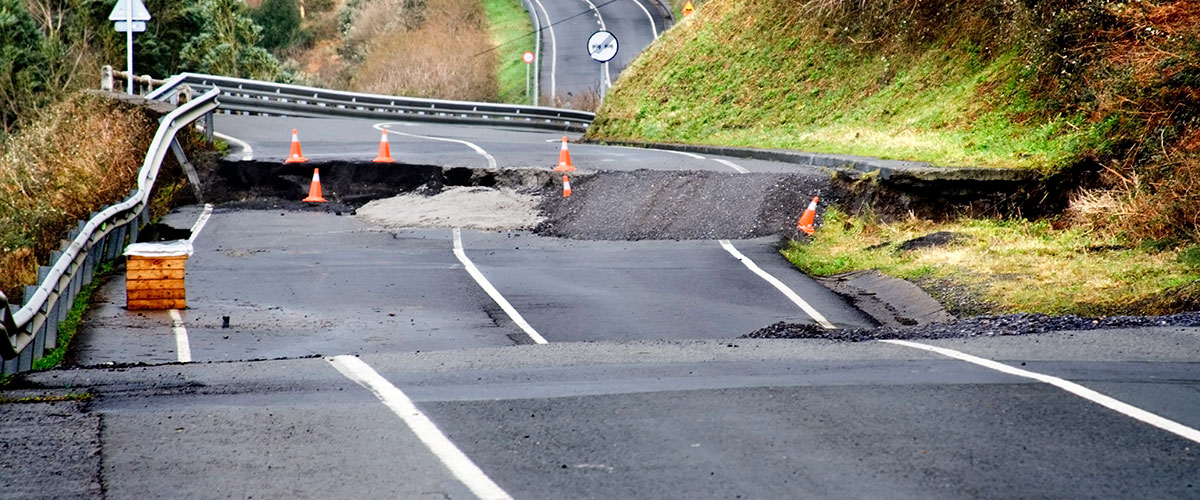Supply Chain Resilience Core Capacities

A resilience-building approach to compare and contrast supply chain disruptions, especially how the Covid-19 pandemic fits into supply chain management’s risk universe.
Part 2: Lessons from Comparing Disruptions
In the previous post in this two-part series, The 7 Core Capacities of Supply Chain Resilience, we identified the core capacities that are the building blocks of supply chain resilience.
We explained how these building blocks can be used to avoid or manage a limited number of predictable outcomes (failure modes).
In this post, we use the approach to resilience-building to compare and contrast disruptions, especially how the Covid-19 pandemic fits into supply chain management’s risk universe.
Our aim is to improve companies’ understanding of supply chain risk and resilience and help them contextualize the pandemic’s unique risk profile.
A side-by-side matrix
Our analysis is captured in the comparison matrix below. The matrix shows the capacity losses and disruption durations experienced by companies in seven major disruptions including the coronavirus pandemic.
The matrix describes the general nature of disruptions, and in most cases depicts mainly local impact areas. However, in global supply chains, a local disruption can quickly escalate into a global impact.
For example, the 2010 Eyjafjallajökull volcano eruption in Iceland caused a primary loss of freight transportation capacity, but that loss also robbed many companies of supply capacity.
In the matrix, this is referred to as a secondary impact. In the case of the Eyjafjallajökull eruption, the initial impact was lost freight transportation capacity, and the secondary loss was supply failures because companies were unable to transport the supplies they needed.
We can see this phenomenon today as a Covid-related shortage of transportation capacity prevents many companies from fulfilling orders and maintaining service quality.

Disruption comparison matrix — Source: James B. Rice Jr.
Note that the seven core capacities are assessed as to whether there is a loss of capacity or not. All capacity losses are temporary unless the firm ceases operation; otherwise, the capacity is recreated over some timeframe which could be anywhere from one day to multiple years. In practice, a short loss of capacity — a few days, for example — is not enough to warrant major actions to recreate capacity.
Often, backup inventory and garden-variety expediting measures can ensure that the supply chain maintains continuity. The matrix gives a general sense of how long the core capacity disruptions lasted. However, this measure does not fully capture the long tail of some of the secondary losses.
Also note that for many companies, the Covid impact was a tale of two supply chains — essential and nonessential. These designations refer to how governments classified companies during the disruptions and drove lost capacities. Many companies classified as nonessential were forced to shut down by governments.
On the other hand, companies classified as essential had an opposite experience: high demand with constrained conditions and some capacity loss (human resources). The matrix deals primarily with disruptions due to loss of a capacity, which tends to be the experience of companies initially deemed as “essential” by local governments and permitted to operate.
Some important observations
The comparative matrix enables us to draw some important distinctions between these disruptions and how they compare to the fallout from the Covid-19 crisis.
Nature of disruption differences
In common with the other disruptions described, Covid-19 caused the loss of core supply chain capacities. However, Covid-related disruptions lasted longer, and involved more global capacity losses than all the other disruptions in the matrix.
We know this implicitly from our experience, but this visual representation clarifies the core issues and areas of focus. In reality, disruptions generally vary only in the number of lost capacities and the length of the disruption or outage.
Global fallout not the rule
Hurricane Katrina in 2005 did not have a high, global impact. Some companies operated factories outside of the impact region that were affected, but most global companies did not suffer meaningful impact outside this area. The high-profile example of GM having to curtail operations at its plants in the European Union and allocate limited parts to high-profile products (trucks) was an exception rather than the rule.
One impact area, multiple implications
The Tōhoku earthquake disaster of 2011 did have a high, global impact, but the disruption was felt primarily in just one area of capacity: supply. However, this outcome was exacerbated because several of the disrupted supplies were sourced primarily in the impact area, which served as a manufacturing hub for many products. This concentration of supply meant that replacing most of the capacity proved difficult if not impossible. Also, many of the supply issues were not immediately evident to most companies because they involved upstream suppliers in the second tier or below.
TTR and TTS implications
A simple (but not necessarily easy) way to assess a firm’s vulnerability to capacity losses is to look at its time-to-recover (TTR) and time-to-survive (TTS). TTR measures the time taken to recreate the enterprise’s lost capacity, and TTS measures how long its supply chain can continue to operate before failure (without additional resource/capacity).
If TTR is shorter than TTS, then the firm’s supply chain is resilient because it can recreate the lost capacity before a failure reaches the customer. However, if the TTS is longer than the TTR, the difference represents the duration of customer outages, and this potential gap in continuity needs to be addressed.
Focus on supply continuity
Which capacities have the longest TTR? Or, put another way, which capacities are more difficult to recreate? While TTR varies from company to company, recovery times also vary according to the type of capacity that must be recreated to restore the organization’s operational integrity.
For example, replacing lost ocean transportation capacity can be time-consuming owing to the dynamics of the ocean market. Replacing supply capacity is probably the most challenging task. Here is a summary of the factors that complicate the replacement of lost capacity:
- Supply: Capital intensity of supply system, achieving full utilization of replacement capacity, and the long cycle times required to recreate capacity (from months to multiple years).
- Transportation: Availability of mode, route, labor, and equipment. For example, ocean-going conveyances are capital intensive and acquiring them can be a lengthy process. Replacing over-the-road transportation requires capital and cycle times vary from long (e.g., when buying new trucks), to relatively short (e.g., when truck capacity is available for hire).
- Converting/internal operations: Availability of labor, equipment, and facilities. The TTR for a facility will range from short-term for basic ones (e.g., warehousing space) to several years (e.g., building semiconductor fab facilities).
- Human resources: Availability of people, which varies according to their skills levels. This is a relatively short-term constraint, although demographic trends suggest longer cycle times.
- Communications: Availability of tech equipment and protocols for communicating internally and externally. The cycle time to recreate capacity is relatively short-term.
- Financial resources: Capital and cash position, cash conversion cycle or CCC, working capital ratios, profitability, and debt-to-equity or D/E ratio. Relatively short-term issues if the firm has favorable ratios, but longer-term or intractable if the firm’s ratios are poor. Businesses often fail through a lack of cash and/or credit.
- Distribution to customers: Availability of distribution outlets to customers (i.e., retail and online stores and processes). This factor has become more complicated as e-commerce has grown and brick-and-mortar retailing has declined.
The future of supply chain resilience
As the above analysis shows, different supply chain disruptions — and company responses to them — have distinctive challenges and characteristics, and these differences can help us better understand the demands of resilience and risk management today and in the future.
This is especially valuable when assessing the impact of the Covid-19 pandemic, which is unprecedented and hence more challenging to analyze in the context of past experience.
Related: The 7 Core Capacities of Supply Chain Resilience
Supply Chain 24/7 Education Resource Center
Find the latest educational resources, degrees, and programs.
Visit: Supply Chain 24/7 Education Resource Center
Article Topics
MIT Center for Transportation and Logistics News & Resources
Supply Chain’s Next Decade of Dealing With the Unknown Sustainability Efforts Continue to Ramp Up, Research Finds Supply Chain Sourcing Alternatives to China DAT’s Caplice Reviews Spot Market Strategy for 2024 Budget Planning Yellow’s Demise Underscores the Need for a New Labor Relations Narrative Is Your Supply Chain Talent Ready for the Future? The Rebound Podcast: Yossi Sheffi and The Magic Conveyor Belt More MIT Center for Transportation and LogisticsLatest in Business
Happy Returns Partners With Shein and Forever 21 to Simplify Returns Baltimore Opens 45-Foot Deep Channel Following Bridge Collapse Ranking the World’s 10 Biggest Supply Chains The Top 10 Risks Facing Supply Chain Professionals Walmart’s Latest Service: Ultra Late-Night Delivery Dollar Tree’s Oklahoma Distribution Center Decimated by Tornado City of Baltimore Files Lawsuit to Recoup Money for Collapsed Bridge More Business













